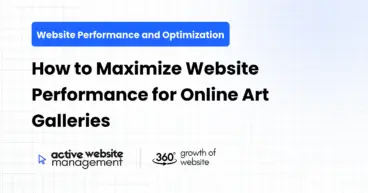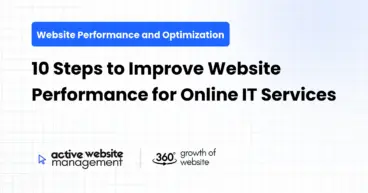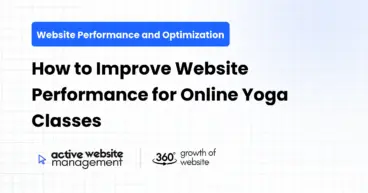January 1, 2025
8 min read
In the modern digital landscape, performance is everything when it comes to eCommerce websites. If you’re running a high-traffic site, you understand that users demand fast, seamless experiences. Even a one-second delay in page load time can lead to a significant drop in conversions and sales. Website performance is not just about speed but also ensuring that your site can handle a substantial amount of traffic without compromising the user experience.
Whether you’re managing a Shopify store, a WooCommerce website, or any other eCommerce platform, optimizing website performance should be at the forefront of your strategy. In this article, we will explore the best practices for maximizing website performance, focusing on the key aspects of SEO, security, user experience (UX), and speed.
Website performance plays a pivotal role in ensuring that your customers have a seamless and satisfying experience when interacting with your online store. According to a study by Google, 53% of mobile site visits are abandoned if a page takes longer than 3 seconds to load. With so much at stake, it’s essential to focus on website performance to keep customers happy and increase conversions.
For high-traffic eCommerce sites, performance optimization becomes even more critical. Traffic surges, large inventories, and complex product catalogs can put a strain on your site. Optimizing website performance not only improves your SEO rankings but also enhances the overall user experience, leading to more sales.
2.1 Website Speed
Speed is one of the most important factors influencing website performance. The faster your website loads, the better the user experience, which directly impacts conversion rates. Customers expect your eCommerce site to load quickly and respond promptly to actions like clicks and scrolls.
Don’t Just Maintain Your Website—
Grow It using Active Website Management! Don't Wait for Growth—Accelerate It with Active Website Management
2.2 Mobile Optimization
As more consumers shop on mobile devices, ensuring your eCommerce website is mobile-friendly is crucial. Mobile optimization not only improves user experience but also positively affects SEO rankings, as Google uses mobile-first indexing for ranking websites.
2.3 User Experience (UX)
User experience includes everything from website navigation to the checkout process. A website that is easy to navigate, offers clear product information, and provides an intuitive checkout process encourages users to stay longer and make purchases.
2.4 Content Delivery
For high-traffic websites, efficient content delivery is critical. You need to ensure that product images, descriptions, and other content are delivered quickly without slowing down the website.
3. Optimizing Website Speed
Speed is directly correlated with user experience and search engine ranking. Here’s how you can optimize the speed of your website:
3.1 Minimize HTTP Requests
Every element on your website, such as images, scripts, and stylesheets, requires an HTTP request to load. By minimizing these requests, you can significantly improve the loading time of your website. Combine CSS files and JavaScript scripts wherever possible, and avoid redundant images or scripts.
3.2 Use Content Delivery Networks (CDNs)
A CDN caches your website’s static content on multiple servers located across various geographic regions. When a user visits your site, the CDN delivers the content from the server closest to them, resulting in faster load times. CDNs are especially beneficial for high-traffic eCommerce sites with global audiences.
Large image files can slow down your website considerably. Make sure to compress images without compromising their quality. You can use tools like TinyPNG or ImageOptim to reduce file sizes.
3.4 Enable Caching
Caching stores a static version of your website and serves it to users without having to reload every time they visit. This improves website speed and reduces server load, especially during traffic spikes. You can implement browser caching or server-side caching solutions like Varnish or Redis.
3.5 Reduce JavaScript and CSS Files
Large JavaScript and CSS files can slow down page rendering. Minify and compress these files to ensure they load faster. Tools like UglifyJS and CSSNano can help with this process.
Don't Wait for Growth—Accelerate It with
Active Website Management Don't Wait for Growth—Accelerate It with Active Website Management
Website security is not only important for protecting your business and customers, but it also impacts your website performance. A secure website ensures that your users’ data is protected while also offering improved trustworthiness. Let’s look at a few security measures that will also help with performance:
4.1 Proactive Security Measures
Regularly monitoring and updating your website’s security ensures that your site stays secure and performs at its best. Active Website Management services, like those offered by Qrolic Technologies, proactively enhance your website’s security with regular updates and checks. This will prevent slowdowns caused by vulnerabilities or hacks.
4.2 SSL Certification and HTTPS
Secure Socket Layer (SSL) certificates and HTTPS are crucial for encrypting data transferred between your website and its visitors. Websites with SSL certificates are also prioritized by search engines, which can improve your website’s SEO ranking. Additionally, an SSL certificate helps establish trust with your customers, especially in eCommerce transactions.
SEO is vital for eCommerce websites to gain visibility and attract organic traffic. However, it also plays a role in your website’s performance. Search engines prioritize fast, mobile-friendly websites, which means performance optimization and SEO go hand in hand.
5.1 Technical SEO for High-Traffic Sites
Technical SEO is about optimizing the technical aspects of your website to make it easier for search engines to crawl and index. This includes ensuring your site is mobile-friendly, implementing structured data (Schema markup), optimizing load times, and fixing broken links. All of these efforts contribute to both improved SEO and better performance.
5.2 SEO-Friendly URLs and Sitemap Optimization
A clear, well-structured URL is important for both SEO and performance. Use descriptive URLs that reflect your product categories and make it easier for both users and search engines to understand your website’s structure. Additionally, submit an updated sitemap to search engines to ensure your pages are indexed correctly.
5.3 Structured Data for eCommerce
Structured data, or schema markup, allows search engines to understand the content of your eCommerce pages better. By implementing structured data, you can improve your product visibility on search engine results pages (SERPs), enhancing both SEO and site performance.
6. Improving User Experience (UX) for eCommerce Websites
A high-performing website also needs to provide a stellar user experience. Here are some UX best practices that can enhance website performance:
6.1 Responsive Design
With an increasing number of consumers shopping on mobile devices, having a responsive design is non-negotiable. A responsive website adapts to different screen sizes, providing an optimal experience for users, regardless of their device.
6.2 Navigation and Search Functionality
A well-structured navigation system makes it easier for visitors to find products quickly. Implementing an intuitive search feature, complete with filters, will allow users to navigate your website more efficiently, enhancing their experience.
6.3 Checkout Optimization
The checkout process is critical to conversion rates. A streamlined, secure checkout system encourages users to complete their purchases. Avoid unnecessary steps and make sure the process is mobile-friendly.
7. Scaling Your Website for High Traffic
As your eCommerce business grows, your website must be able to handle higher volumes of traffic. Here are a few strategies for scaling your website’s performance:
Load balancing distributes traffic evenly across multiple servers, preventing any one server from becoming overwhelmed. This ensures that your website performs optimally even during peak traffic periods.
7.2 Cloud Hosting and Auto-Scaling
Cloud hosting offers flexibility and scalability, ensuring that your website can scale according to traffic demands. Auto-scaling solutions automatically adjust your server capacity to accommodate spikes in traffic, ensuring your website remains fast and functional during high-traffic events.
8. Active Website Management: A Key to Continuous Growth
Active Website Management (AWM) services can help eCommerce businesses maintain continuous growth by offering ongoing website optimization. Regular updates, security enhancements, SEO improvements, and content refreshes are part of the AWM process. With AWM, your website is never stagnant—it evolves to meet changing business goals.
AWM ensures that your site is always performing at its best by addressing issues proactively, enhancing speed, security, and SEO regularly. Whether you need SEO audits, performance enhancements, or security updates, a comprehensive service like AWM from Qrolic Technologies ensures long-term website success.
9. Conclusion
Maximizing website performance for high-traffic eCommerce sites requires a multifaceted approach. Speed, mobile optimization, user experience, security, and SEO are all integral components of a high-performing site. By implementing the strategies outlined in this article, you can create an eCommerce experience that not only meets but exceeds user expectations, resulting in improved conversions and customer satisfaction.
Continuous website management, like the services offered by Active Website Management, ensures your website is always evolving and adapting to market changes. Don’t let your website fall behind—take proactive steps to enhance its performance and stay ahead of the competition.






